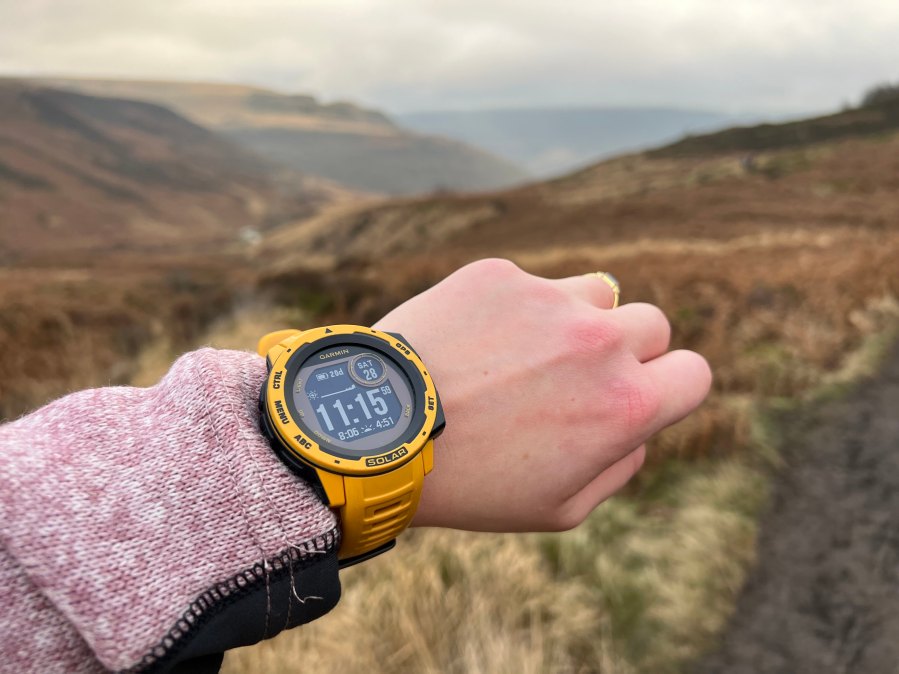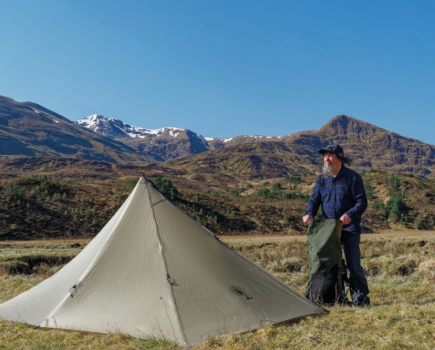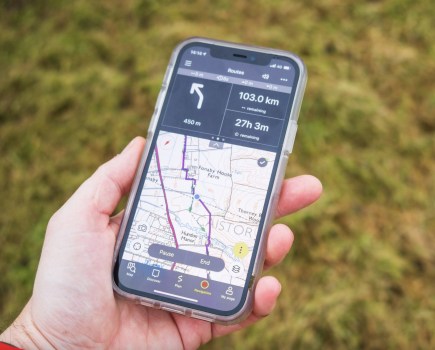GPS watches can add an extra perspective on mountain navigation – and help to keep you fit. We test some of the best devices.
Outdoor technology advances quickly, and there have been substantial advancements since our last round of best GPS watch evaluations. Top-of-the-line equipment are more powerful (but also more costly). Mapping is becoming more affordable. At most pricing tiers, battery life has increased. But the fundamental question remains: why spend extra money on a high-tech outdoor watch when a cheap digital watch would do? What can GPS watches do better than smartphones for individuals accustomed to smartphone navigation?
In 2021, I pointed out that tracking your walk with a phone will likely drain the battery far more quickly than using a watch. However, the best phones of 2024 have bigger batteries than they did two years ago, making battery life less of a concern. If you have a new, top-end phone, and know how to conserve its battery on the hill, go ahead and use it for tracking your walks. But if your phone is a few years old with an ageing battery, using a GPS watch will save your phone’s battery for taking pictures, viewing maps or dialling mountain rescue in an emergency.
A GPS watch will communicate with your phone and can be used for fitness tracking, whilst some models are ideal as a navigation sidekick, providing quick reference to data such as elevation, position and distance hiked. Although you can do this with a smartphone – or by pacing/timing with a map and compass – having this info glanceable on your watch can be very convenient. And if you don’t want a nav tool on your wrist, and just want something cheap and cheerful to record your walk stats, there are plenty of fitness trackers to choose from.
GPS watches need skill and experience to use safely. Whilst some are capable of replacing a traditional GPS, others are far more basic and have no navigation functions. Understand what kind of device you have and what it can do, and never rely solely on one.
Our picks of the best GPS watches
In this article, you will find an extensive range of GPS watches all of which have been put through their paces during testing. We have covered a variety of watches from budget watches for the more casual hiker to the higher-priced items more suited for the dedicated walker. We’ve looked at everything you could need from a GPS watch and scored them all appropriately, take a look and see which watch will work best for you.
Suunto Vertical Titanium Solar
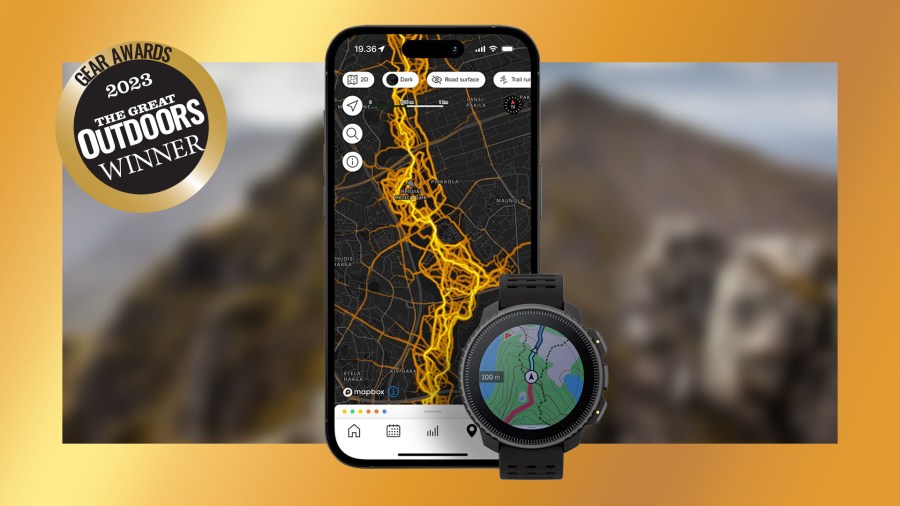
TGO Gear of the Year Winner 2023
Overall, this is one of the most impressive GPS watches I’ve tested, and a good choice for anyone needing a mountain navigation companion that can take serious abuse.- Class leading battery life
- Solar charging
- Relatively easy to use
- Big and bulky
- Mapping lacks text labels
- Flimsy magnetic charger
- Laggy operation
| Quick specs | |
|---|---|
| RRP: $839 | £725 (as reviewed; other configurations start at $629 / £549) Available from: suunto.com Weight: 74g Rating: 4.5/5 Case size: 49 x 49 x 13.6mm Screen: 1.4” transflective colour, always-on Battery life (GPS on): 85–280 hours depending on features and solar intensity; weeks or months in power-save mode OS grid ref? Yes Mapping: Yes; contours and footpaths but no labels Operation: Buttons and touchscreen. |
The Vertical is Suunto’s latest GPS watch aimed at mountain sports enthusiasts and athletes. Until recently the Finnish brand had been eclipsed by competitors, whose devices were often years ahead in terms of features and battery life. However, the Vertical represents a leap back to the head of the pack in many respects, making a compelling overall package – although a few niggles remain.
The Vertical comes in two models: a base model made from stainless steel and a titanium one with solar charging. You can choose from a variety of colourful quick-release silicone straps and is compatible with standard 22mm watch straps.
Build quality is excellent and the design attractive, but it’s physically gigantic on my 6.2in wrist. I’d prefer to see a version no more than 42mm wide and 10mm thick.
Overall, this is one of the most impressive GPS watches I’ve tested, and a good choice for anyone needing a mountain navigation companion that can take serious abuse. It’s a lot more suitable for hardcore winter conditions than your phone – and the battery will last much longer. The price, while expensive, is reasonable compared to competitors.
Read more: Suunto Vertical Titanium Solar review
Coros APEX 2
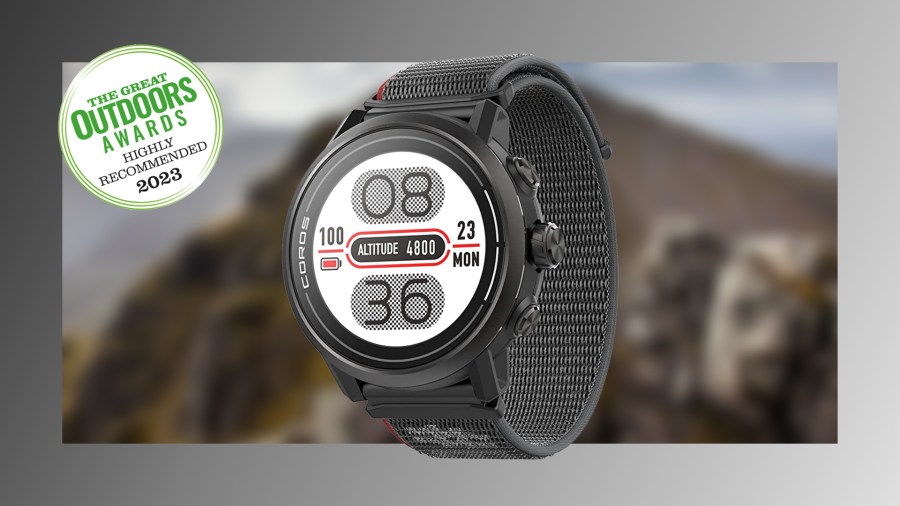
TGO Gear of the Year Highly Commended 2023
he Coros APEX 2 model has so many improvements that it has risen to the top of the pile and is now, in my view, the most versatile GPS watch for UK hikers.- Superb battery life
- Mapping and OS grid refs at a low price
- High quality materials and strap
- Screen dim indoors
- Mapping more basic than garmin
| Quick specs | |
|---|---|
| RRP: $399 | £419 Available from: Amazon & Sports Shoes Weight: 1.5oz | 43g Rating: 4.5/5 Case size: 43×42.8×12.8mm Screen: 1.2in transflective colour, always-on Battery life (GPS on): 45-50 hours OS grid ref? yes Mapping: yes (optional free download); has terrain features but some paths missing Operation: buttons, rotating crown, touchscreen |
The Coros APEX 2, which received a Best Buy award in our print issue, is an impressive GPS watch for the price, with a scratch-resistant sapphire crystal screen and a part-titanium body with 50m water resistance. The included strap is comfortable in both hot and cold weather, and the intuitive rotating crown is great for scrolling quickly through menus. The menus are simple, with easy-to-understand data screens and easy access to altimeter, barometer and GPS location. The phone app works well, integrates with many third-party services, and can be used to import and export routes. The battery life is exceptional, exceeding the brand’s claimed 45 hours, and charges rapidly from a power bank. It is the most versatile GPS watch for hikers, and the cost is still very reasonable.
Read more: Coros APEX 2 watch review
Garmin Instinct 2 Solar
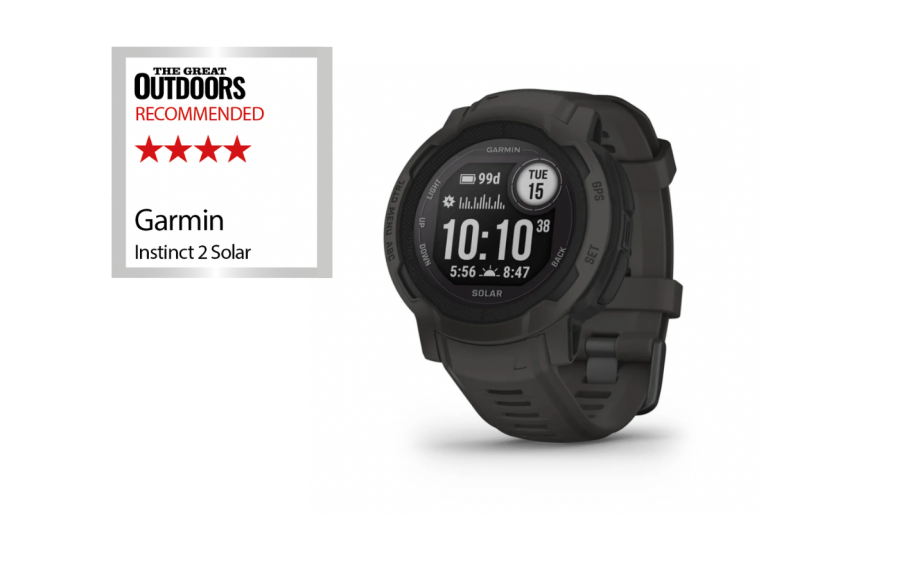
Alex Roddie Recommends
The Instinct 2 Solar is a great GPS watch for hill use, and the price is still attractive despite an increase; but you are paying for extra features that most walkers will never want.- Available in two sizes
- Exceptional battery life
- Rugged
- Solar charging
- Good for navigation
- Customisation
- Steep learning curve
- Vast number of irrelevant features for walkers
| Quick specs | |
|---|---|
| RRP: $349.99 | £350 Available from: Amazon & Sports Shoes Weight: 1.8oz | 53g Rating: 4/5 Case size: 45x45x14.5mm Screen: 0.9in transflective monochrome, always-on Battery life (GPS on): 30-370 hours depending on features used and solar intensity; unlimited in power-save mode OS grid ref? yes Mapping: no, but usable breadcrumb navigation Operation: buttons |
The Instinct 2 Solar is a rugged-looking GPS watch with a silicone strap, a clear monochrome display, and solar charging. It has become more complicated to set up, but is still a great GPS watch for hill use. It does all the basics well, including offline sync with your phone and OS grid reference. Battery life is substantially better than its predecessor’s, and the more efficient solar panel can extend usable tracking time dramatically. The non-solar model is worth a look for a £100 price saving.
Read more: Garmin Instinct 2 Solar review
Garmin fenix 7X Pro
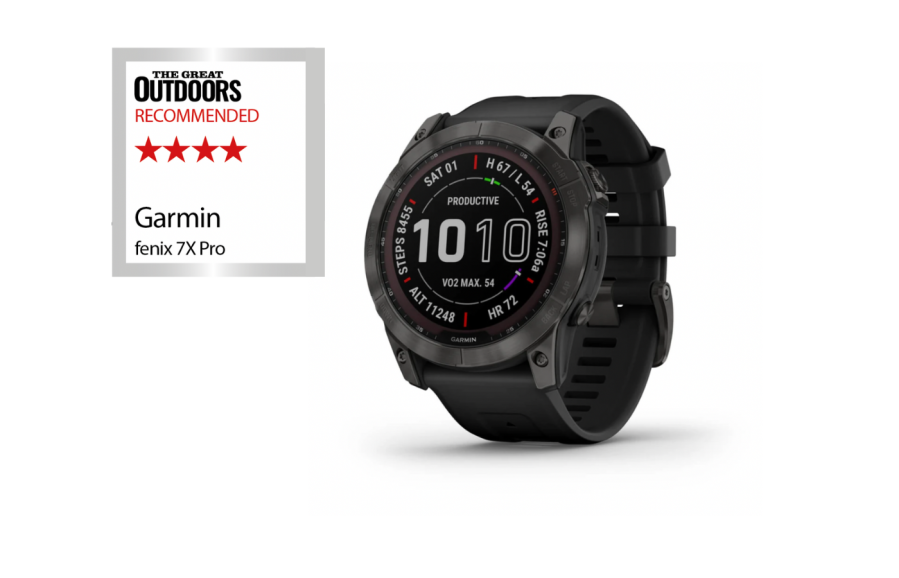
Alex Roddie Recommends
There’s almost nothing this watch can’t do. It even has a powerful torch – perhaps its best feature! But the price is very high, and its capabilities are overkill for most users.- Exceptional battery life
- Solar charging
- Fluid touchscreen
- Built in torch
- Very expensive
- Big and bulky
- Learning curve
| Quick specs | |
|---|---|
| RRP: $999 | £860 Available from: Amazon Weight: 3.1oz | 89g Rating: 4/5 Case size: 51x51x14.9mm Screen: 1.4in transflective colour, always-on Battery life (GPS on): 38-578 hours depending on features used and solar intensity; 1 year + in power-save mode OS grid ref? yes Mapping: yes, with option to install additional maps Operation: buttons and touchscreen |
The Garmin Fenix 7X is a GPS watch that offers a wide range of features, including a touchscreen, improved battery life, solar charging, a torch, and some software tweaks. Available in three sizes, the 7X is the largest, making it more comfortable for smaller wrists. The watch comes with a quick-release silicone strap and a titanium construction, making it lightweight but heavier than other devices tested. The large screen is protected by sapphire crystal.
The Fenix 7X Pro adds a touchscreen, improved battery life, better solar charging, a torch, and some software tweaks. The touchscreen is fluid and makes the interface feel like a phone for navigation, making it a game-changer for scrolling and zooming in maps. The watch can be operated entirely by buttons and has decent mapping with terrain features and most paths marked.
Battery life is exceptional, with Garmin claiming 38-578 hours with GPS on, but this is typically 100-200 hours with the heart sensor switched off. The screen now has a more obvious solar border, adding multiple hours to a full charge.
Despite its capabilities, the Fenix 7X is expensive and overkill for most users. For comparisons, check out Garmin’s GPS watch guide.
Read more: Garmin Fenix 7x Pro review
Suunto 5 Peak
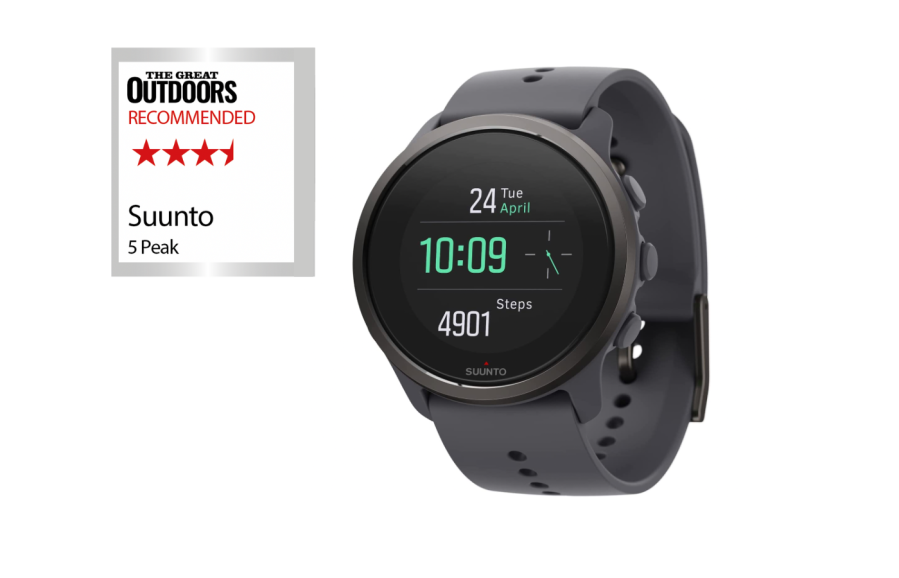
Alex Roddie Recommends
If you are looking for an affordable watch to cover the basics, and don’t need mapping, compass, barometric altimeter or best-in-class battery life, this watch is a good choice.- Great value
- Does the basics well
- Slow user interface
- Uncompetitive battery life
- No barometric altimeter or compass
| Quick specs | |
|---|---|
| RRP: $240 | £169 Available from: Amazon & Alpine Trek Weight: 1.3oz | 39g Rating: 4/5 Case size: 43x43x12.9mm Screen: 1.1in transflective colour, always-on Battery life (GPS on): 20–40 hours OS grid ref? yes Mapping: no, but usable breadcrumb navigation Operation: buttons |
The Suunto 5 Peak is a compact, lightweight watch at an attractive price. It offers five buttons for easy use, no touchscreen, and a quick-release silicone strap. It focuses on tracking, fitness, and basic navigation tasks, but there is no compass or barometric altimeter. The screen is in colour, but small and dim compared to other watches tested. The phone app connects to komoot, FATMAP, Strava and other services, but offers less flexibility than the Garmin or COROS apps.
The watch claims 20-100 hours of GPS training time, but 100 hours is for the ‘Tour’ mode, which has greatly reduced track recording and is less useful if you want to analyse your route afterwards. It is made with 100% renewable energy and is a good choice for those looking for an affordable watch to cover the basics.
Read more: Suunto 5 Peak review
Oppo Watch Free
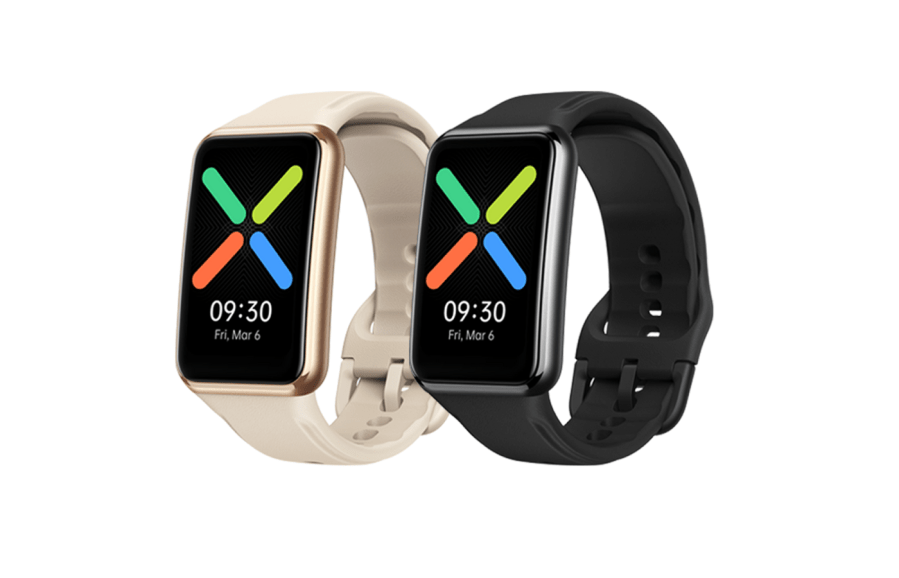
Alex Roddie’s Verdict
If you’re looking for something simple, cheap and attractive to help you get a little fitter, and are already happy using other tools for navigation, the Oppo Watch Free is worth a look.- Inexpensive
- Responsive interface
- Easy to use
- Great if you want activity and fitness tracking
- No built in GPS or nav
- Poor strap
- Limited battery life
- Touchscreen only
| Quick specs | |
|---|---|
| RRP: International shipping | £89 Available from: Amazon Weight: 1.2oz | 35g Case size: 46×29.7×10.6mm Screen: 1.64in AMOLED colour, tap/raise to wake Battery life: about 9-10 hours of activity recording (no GPS onboard); about 10 days of general use OS grid ref? no Mapping: no Operation: touchscreen |
The Oppo Watch Free is an activity tracker that relies on a connected phone’s GPS and its own accelerometer to track your activity. It is not a GPS watch, but rather a basic watch for tracking fitness and walking. The watch is thin, light, and responsive, with visibility great indoors and even in sunlight.
The interface is simple and responsive, with minimal clutter. It can track steps, sleep, weather reports, set timers, stopwatches, and measure heart rate. The watch also works well for tracking walks and runs. The battery drains less quickly due to using the phone’s GPS. The watch provides information on hike distance, duration, estimated calorie burn, heart rate, and step count.
If you are looking for a simple, cheap, and attractive activity tracker, the Oppo Watch Free is worth a look. However, the Suunto 5 Peak is a better buy for a bit more money, as it has real GPS and can provide an OS grid reference.
Read more: Oppo Watch Free review
Features to look out for in GPS watches
Comfort and fit
If you have a small wrist, a smaller case size may be better. Look for a comfortable strap too. Touchscreen-only devices are less suitable for use with gloves or in bad weather.
Durability
Most watches tested are waterproof. For maximum durability, look for sapphire crystal and a case made from titanium or rugged plastic.
GPS
Cheaper fitness trackers don’t always have their own GPS, and instead piggyback off your phone for position. This is less accurate and will drain your phone more quickly but it can work well enough for basic use on day hikes. We’ve got a handy article on how to use GPS for hiking navigation.
Battery life
Look for at least 12 hours with GPS active, or more for multi-day walking. Some devices have battery-saving modes that will extend battery life at the cost of accuracy.
Screen
AMOLED displays tend to be less readable in bright sunlight and can use more battery. An always-on, transflective, sunlight-readable display can be used without the backlight.
Track recording
Every device can track your walk or run and save it to a smartphone app. Look for the ability to share the route as a GPX file for viewing in your mapping app of choice.
Fitness tracking
Every device tested has a heart-rate sensor and can be used to track basic fitness metrics such as steps, distance, and calories.
Altimeter/barometer/compass
These can help pinpoint your location, predict bad weather, and keep you on track. Elevation and pressure can be surprisingly accurate if frequently calibrated; compass is best used for general guidance only.
OS grid reference
The best GPS watches can give an OS grid reference of your location.
Navigation
Some GPS watches can navigate a saved route, either on a graphical breadcrumb screen or a map.
Mapping
Only a few models offer maps. Included mapping may be basic, but there are often alternatives with more detail. Ask yourself if you really need it; devices with usable outdoor maps are very expensive.
Connectivity
Some watches can connect to services such as Strava, Komoot, Apple Health, MyFitnessPal and more. Every watch tested offers smartphone notifications. check out our guide to the best Best hiking apps for digital mapping we’ve also covered a regular question around conectivity with Do GPS watches need the internet?
How we test
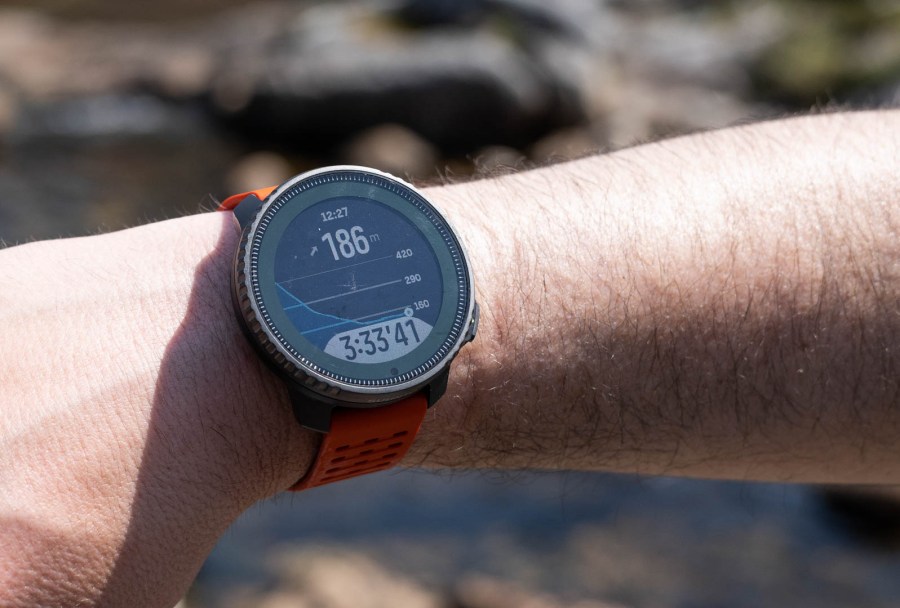
Alex Roddie tested these watches on a variety of day hikes and short backpacking trips in the Lincolnshire Wolds, Lake District, Scottish Highlands and Suffolk Sandlings. Weights stated include the standard strap, weighed on Alex’s digital scale.

